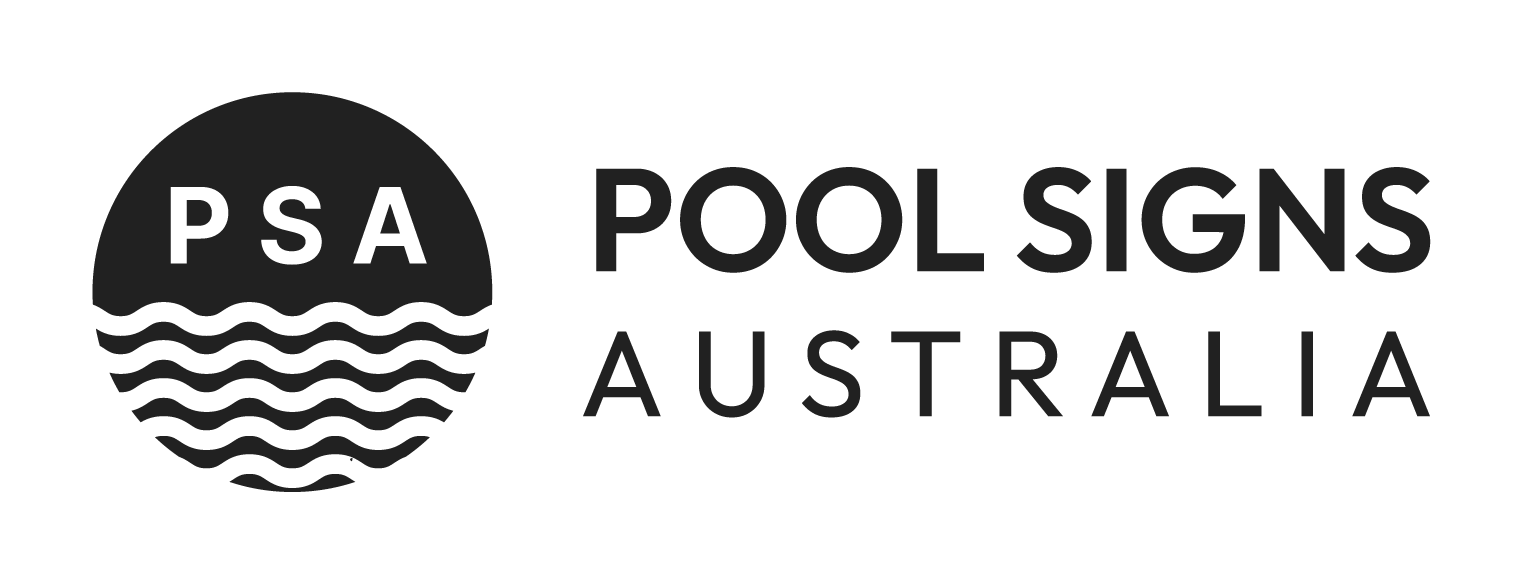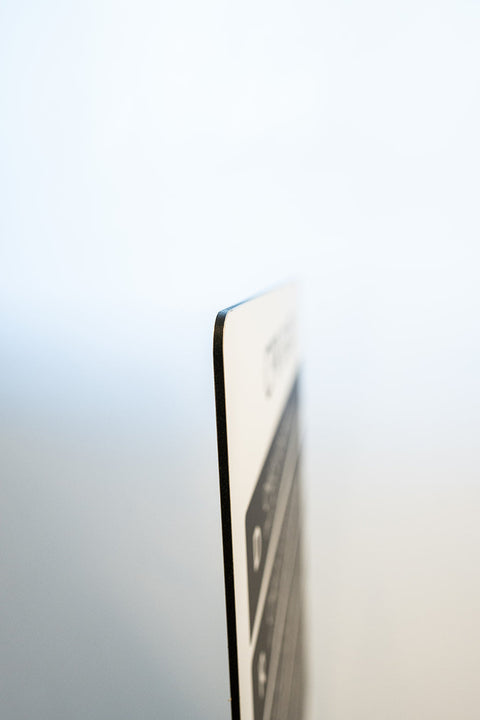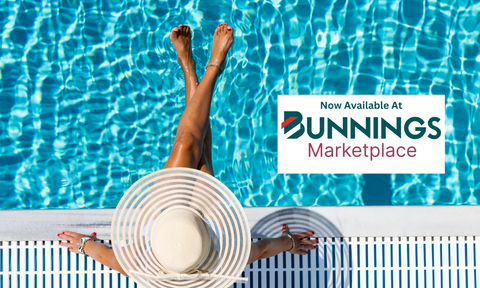Choosing the right material for pool signage is crucial for durability, visibility, and compliance with Australian safety standards. Among the various options—such as acrylic, plastic, and metal—Aluminium Composite Material (ACM) stands out as the best choice for pool signs.
ACM is a lightweight, strong, and weather-resistant material made of two thin aluminium sheets bonded to a polyethylene core. This structure gives it the benefits of both metal and plastic, making it ideal for outdoor use in demanding environments like swimming pools, aquatic centres, and public pools.
This guide explores:
- What ACM is and how it’s made.
- Why ACM is the best choice for pool signs.
- The advantages of ACM over other signage materials.
- Best practices for using ACM in Australian pool signage.
What Is Aluminium Composite Material (ACM)?
ACM, also known as Aluminium Composite Panel (ACP), is a multi-layered material consisting of:
- Two Aluminium Layers – Provide rigidity, weather resistance, and a sleek finish.
- Polyethylene (PE) Core – Lightweight yet strong, offering flexibility without compromising strength.
- Protective Coatings – Enhance resistance to UV rays, corrosion, and scratches.
Originally developed for architectural and signage applications, ACM is now widely used for outdoor safety signage, including pool signs, construction site signs, and commercial signage.
Why ACM Is the Best Choice for Pool Signs in Australia
Australian pools are exposed to harsh environmental conditions, including:
- Constant moisture and humidity
- Direct sunlight and intense UV exposure
- Chlorine and saltwater fumes
- Temperature fluctuations
Traditional materials like plastic, acrylic, and wood often fade, warp, or deteriorate over time. In contrast, ACM signs remain intact, highly visible, and resistant to environmental damage.
1. Waterproof and Corrosion-Resistant
One of ACM’s biggest advantages is its waterproof and corrosion-resistant properties. Since pools generate high humidity and use chlorine, saltwater, and other chemicals, materials like steel and wood tend to rust, rot, or degrade over time.
- Aluminium’s natural oxide layer prevents rust and corrosion.
- ACM panels are impervious to water, making them perfect for long-term outdoor use.
- Unlike plastic or acrylic, ACM won’t crack or degrade when exposed to chlorine fumes or saltwater pools.
This makes ACM ideal for both indoor and outdoor pools, including public swimming pools, hotels, resorts, and aquatic centres.
2. UV-Resistant and Fade-Proof
Pool signs need to be highly visible at all times. Unfortunately, exposure to Australia’s intense UV rays can cause fading, discolouration, and cracking in inferior materials.
- ACM signs are coated with UV-resistant finishes, preventing them from fading or yellowing.
- Unlike vinyl stickers or painted signs, ACM retains its bold colours and sharp text for years.
- Perfect for Australian pools, where the harsh sun can degrade traditional signage quickly.
This ensures that No Diving, Pool Rules, Danger – Chemical Storage, and Depth Markers remain clearly visible for safety compliance.
3. Strong Yet Lightweight
Despite being extremely strong, ACM is lightweight compared to solid aluminium, steel, or acrylic signs. This makes it easy to install while still offering durability and resistance to impact.
- Thicker metal signs can be heavy and difficult to mount.
- Plastic or acrylic signs may be light but brittle, cracking under pressure.
- ACM balances strength and weight, making it ideal for mounting on walls, fences, gates, and poles.
For public swimming pools, hotels, and leisure centres, where signage needs to be both secure and easy to manage, ACM is the perfect material.
4. Fire-Resistant and Safe for Public Areas
Another key benefit of ACM is its fire-resistant properties. Unlike plastic-based materials, ACM is non-combustible and does not produce toxic fumes when exposed to heat.
- This makes it safe for indoor pools, enclosed aquatic centres, and high-risk areas like chemical storage rooms.
- Many ACM panels meet fire safety standards, providing extra security for public and commercial facilities.
For schools, public swimming pools, and hotels, where safety regulations are strict, ACM is the preferred material for signage.
5. Customisable for Any Pool Sign Application
Pool signs come in various sizes, designs, and colour schemes, depending on their purpose. ACM is highly versatile, allowing for:
- Vibrant printed graphics
- Custom engraving or laser cutting
- Reflective coatings for visibility at night
- Bilingual or multilingual signage for diverse communities
- Whether you need safety signs, directional signs, or advertising signage, ACM can be customised to meet your needs.
ACM vs Other Sign Materials: A Comparison
Weather Resistance:
- ACM: Excellent
- Plastic (PVC): Poor (warps)
- Acrylic: Brittle
- Steel: Good
- Wood: Poor
UV & Fade Resistance:
- ACM: Yes (UV Coated)
- Plastic (PVC): No
- Acrylic: No
- Steel: Yes
- Wood: No
Durability:
- ACM: High
- Plastic (PVC): Low
- Acrylic: Medium
- Steel: High
- Wood: Low
Waterproof:
- ACM: Yes
- Plastic (PVC): Yes
- Acrylic: Yes
- Steel: No (Rusts)
- Wood: No
Weight:
- ACM: Lightweight
- Plastic (PVC): Lightweight
- Acrylic: Lightweight
- Steel: Heavy
- Wood: Heavy
Cost-Effectiveness:
- ACM: Affordable
- Plastic (PVC): Cheap
- Acrylic: Expensive
- Steel: Expensive
- Wood: High Maintenance
Best Practices for Using ACM Pool Signs
- Proper Mounting for Longevity
Use stainless steel screws or aluminium brackets to prevent rust.
Avoid drilling directly into ACM panels—use pre-drilled mounting holes.
- Regular Cleaning to Maintain Visibility
Clean ACM signs with a mild detergent and water to remove chlorine residue.
Avoid abrasive cleaners that may scratch the protective coating. - Strategic Placement for Maximum Visibility
Position signs at eye level near entry points, pool edges, and chemical storage areas.
Use reflective ACM signs for improved visibility at night.
Final Thoughts: Why Aluminium Composite Material Is the Best for Pool Signs in Australia
If you’re looking for long-lasting, weather-resistant, and cost-effective pool signs, Aluminium Composite Material (ACM) is the clear winner.
For swimming pool safety signs, chemical storage signs, and commercial pool signage, ACM provides the best balance of durability, visibility, and cost-effectiveness.




